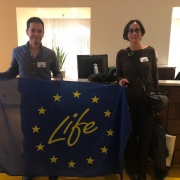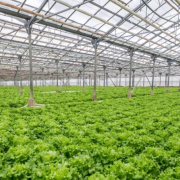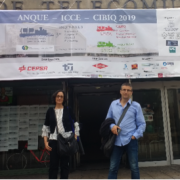“Pollutant Photo-NF remediation of Agro-Water”
Micropollutants (industrial chemicals, pharmaceuticals, endocrine disruptors, biocides, pesticides, hormones), emerge as a new class of bioactive and persistent contaminants, that cannot be fully eliminated in conventional Wastewater Treatment Plants (WWTPs). Novel solutions for end of pipe removal of micropollutants before reaching a WWTP or retrofit a WWTP and allow for water reuse are needed.
The key objective of the LIFE17 ENV/GR/000387 LIFE PureAgroH2O project is to develop and demonstrate a novel purification system for the sustainable management of the end-of-the-pipe wastewater effluents generated in fruit & vegetable industry, the prevention of losses of various inorganic and organic contaminants to the environment and the recycle/reuse of the purified water. To achieve the objective, a close-to- market, patented water purification system with the ability to effectively recycle 15 m3/day of real agro-wastewater will be developed demonstrated and commercialised.
- Description of LIFE PureH2OAgro Technology– Photocatalytic Nanofiltration Reactor (PNFR).
The PNFR technology/reactor, integrates synergistically the most effective micropollutant abatement technologies such as photocatalysis (P) and nanofiltration (NF), in one smartly designed membrane reactor (R) module-PNFR that will retrofit a Fruit & Vegetable Processing Industry for pesticides removal
Description: The most advanced visible light activated, TiO2 based photocatalysts (VLA), are deposited and stabilised on the shell and lumen surfaces of NF (alumina) monoliths. The highly innovative aspect of the reactor design is that it achieves remote irradiation of the monolith’s shell and lumen photocatalytic surfaces while conducting the tangential flow nanofiltration process. Advanced optical technologies such as bundles of side glowing optical fibers coupled with arrays of high-power LEDs and Fresnel lenses effectuate the photocatalytic action. Further enhancement of the photocatalytic effect is achieved by incorporating additional flow channels in the shell side of the monoliths and hosting and effectively irradiating polymeric fibers with TiO2 powder embedded into their matrix (TiO2 based mixed matrix fibers (Ti-MMFs).
The synergetic effect: The synergy in PNFR technology can be comprehended as follows:
- Photocatalysis enhances the NF effectiveness and operation capabilities.
- Nanofiltration enhances the photocatalytic effect.
- Prospects for future applications of the PNFR technology.
Photocatalysis is much more efficient than ozonation, offering a very high surface area for micropollutants to be adsorbed and subjected to sequential oxidative degradation stages and results in a lower THMFP (trihalomethanes formation potential) compared to the ozonation process. Granular activated carbon (GAC) filtration and powdered activated carbon (PAC) adsorption have showed a mitigated efficiency depending on the micropollutant and the frequency of regeneration/replacement. Therefore, the PNFR can retrofit WWTPs with an additional barrier of an advanced water treatment method, which doesn’t depend on the kind of micropollutant, doesn’t need frequent regeneration, operates in continuous flow mode, doesn’t need intensive post treatments for the abatement of by-products and has the capacity to recover the 95% of the wastewater effluent for reuse. Since the PNFR technology operates primarily as a nanofiltration (NF) process, it is contingent upon the factors affecting the performance of NF, with main challenge to avoid membrane fouling by selecting the best pre-treatment methods based on the industrial wastewater characteristics. Having established the required pre-treatment stages (a combination of Coagulation Flocculation-Sedimentation and PAC) a list of potential other applications of PNFR is following provided:
- Wastewater from the washing of the spraying machinery, phytosanitary treatments equipment and containers of agricultural chemicals
- Greywater of hotels, public building and houses
- Drinking water, for taste and odour abatement
- Effluent of anaerobic fermentation in biogas production and recycle the water.
3. Benefits for the Industry.
- End Users: Considering that a novel technology indenting to reduce environmental pollution cannot always conclude to a source of income or a reduction in the operating expenses of the industry that will adopt it, we have identified the following key benefits of the PNFR technology for industrial end-users:
- Avoidance of the cost for handling wastewater.
- Avoidance of the environmental cost of either tackling it later in the form of a fine by public bodies or reflected in the measurements of the constant and permanent reduction of drinking water resources on the planet. Water scarcity will certainly increase the cost of water use for huge water consumers.
- Reduction of carbon emissions (and the incurred costs) from the procedures of managing wastewater.
- Cut off the annual cost for freshwater usage.
- Better water quality that can conclude to improved products.
- Multiple benefits for industries that make sustainability a key consideration in the delivery of their goods and services and strive to minimize the production of harmful chemicals, excess materials, and waste.
- Socio-economic benefits in the region where the industrial end-user is situated.
- Benefited through the employment of new high-quality researchers/staff in new work positions.
- Promotion of the strategy in investing on new technologies, proving that the targets of quality, competitiveness and environmental protection are in line with the EU policies for the environment.
- Water treatment Industry: The broad applicability of PNFR in several industrial sectors will contribute to the development of new job opportunities in the sectors of water industry and environmental technologies. According to the EU Action Plan for the Environment 2020 the sector of environmental technologies has increased employment by 3% and it has been identified as a rapidly expanding sector. Hence, such technologies are expected to contribute and build on the high potential of this environmental sector.
Partners
- BENAKI PHYTOPATHOLOGICAL INSTITUTE (BPI), Coordinator
- ATIONAL CENTRE FOR SCIENTIFIC RESEARCH “DEMOKRITOS” (NCSR DEMOKRITOS)
- AGRICULTURAL COOPERATIVE OF ZAGORA-PILIO (ZAGORIN)
- UNIVERSIDAD DE ALMERIA (UAL)/ CIESOL
Collaborating Company with UAL
- CITRICOS DEL ANDARAX, S.A.
“With Contribution of the LIFE Programme of the European Union”











